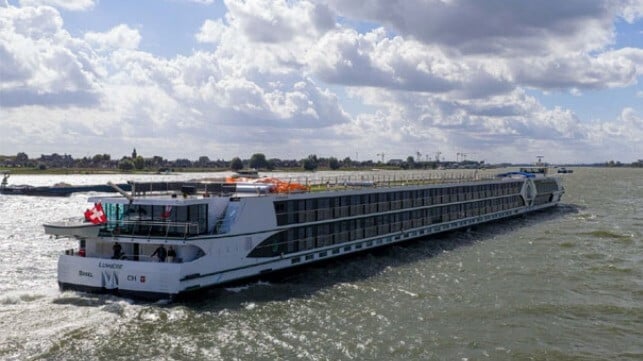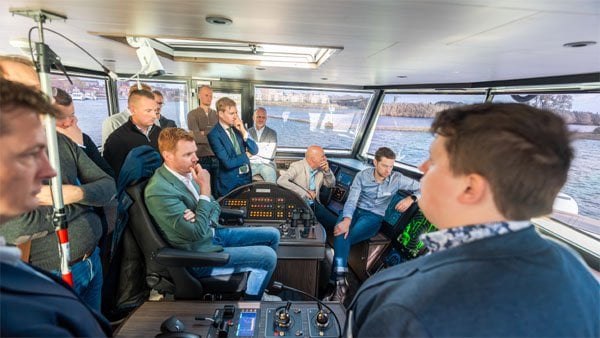River Cruise Ship Completes Dock-to-Dock Autonomous Voyage

A brand-new luxury river cruise ship has completed what is being reported as the first-ever inland dock-to-dock fully autonomous sailing. The 135-meter (443-foot) ship, which accommodates 130 passengers and 50 crew, was able to undock, sail a distance of approximately six nautical miles, and dock on the Netherlands’ Merwede River entirely in autonomous mode under the supervision of the vessel’s captain.
The trip was a demonstration of the new systems fitted aboard the Lumière, a river cruise ship that is completing construction and is owned by Scylia, a German travel company with over 40 river cruise ships that specializes in full-ships charters and the MICE (Meetings, Incentives, Conferences, and Exhibitions) segment. Next year, Lumière will be sailing on the Rhône for the tour company Tauck, which promotes that the ship was especially designed to be spacious with larger cabins and luxurious passenger amenities.
The autonomous demonstration voyage was completed on October 24 with the ship sailing from Hardinxveld-Giessendam to Gorinchem in the Netherlands in real-world conditions. The companies highlight that even a gale-force crosswind of Beaufort 8 (34–40 knots) did not affect the ship’s course.
“With the Dock2Dock project, we’re proving that autonomous technology is no longer futuristic - it’s happening now. Safely, efficiently, and sustainably,” says David Woudenberg, Head of Product Development at Shipping Technology.

The demonstration ran the cruise ship autonomously from dock to dock (Shipping Technology)
The demonstration combined Retina’s M-Pilot maneuvering system with Shipping Technology’s ST BRAIN and Autonomous Lane Assist (ST Sailing). During the demonstration, the Retina M-Pilot controlled both the thrusters and the engines of the river cruise vessel, working seamlessly with Shipping Technology’s ST BRAIN and Autonomous Lane Assist (ALA). Together, the systems guided the vessel along the optimal route, automatically managing rudder and pod movements. The pilot system continuously factored in variables such as vessel load, engine RPM, and desired turning acceleration to determine the most efficient steering response.
They highlighted that the system performed exactly as intended. In addition to the safety factor, they also foresee other benefits, including reducing fuel consumption by route optimization. They also noted that normally, captains turn off their track pilot when approaching or leaving a berth, but the system automated the process while giving the captain the ability to stay fully in charge.
Tom Panjer, Founder of Retina BV, highlighted that the system “is particularly relevant for vessels with Z-drives. The system measures what happens 10 times per second, allowing controlled and safe operations.”
It was the latest in a series of tests for the pioneering river cruise ship. Bart Vos, a naval architect and project manager for Scylla, highlighted in an online posting that a few weeks ago, they also tested a battery power system on the vessel. Installed are two HP-inline Hybrid Powertrains with battery packs that can drive the ship at up to 11km/h in a fully electric mode. The system was tested, demonstrating that the ship has enough battery power to enter ports and pass locks with no emissions or noise. The battery can be either recharged with shore power or through a shaft generator principle, Vos explained.
The companies conducting the autonomous demonstration called it a pivotal moment for inland shipping. They said much of the focus has been on remote-controlled navigation. They emphasized that their autonomy system is not about removing the captain from the ship, but creating smarter tools and more efficient navigation. Furthermore, they said experienced captains will have more time, while less experienced crews will feel better supported.
